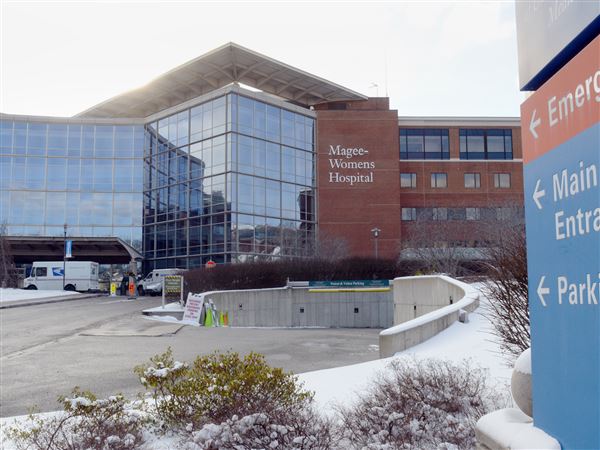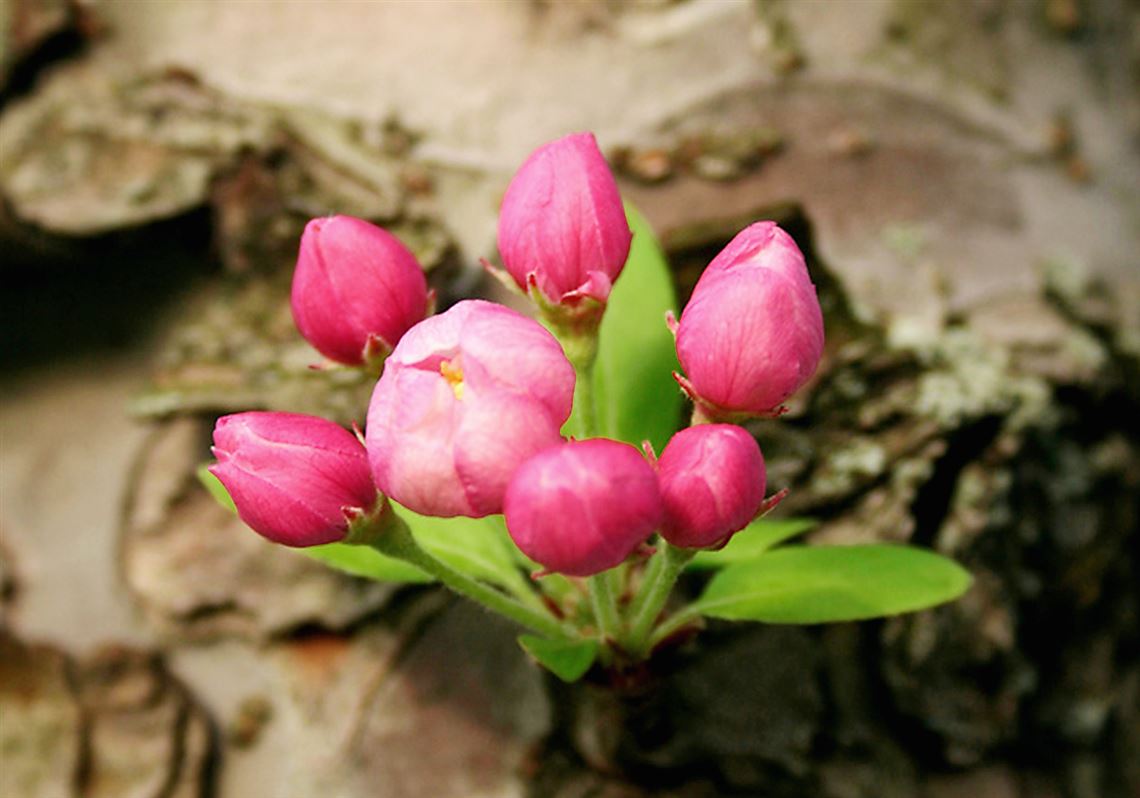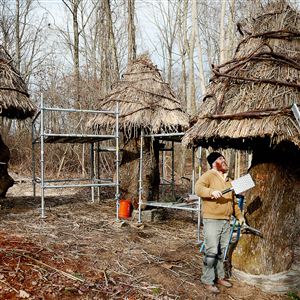Are you looking for a weeping tree? Does your design call for a medium-sized, vase-shaped tree or one with a rounded habit? Or maybe you need an upright grower that will top out at 8-10 feet Crabapples (Malus spp.) have you covered.
Breeders have developed cultivars of this durable landscape staple to fit just about any size or shape, including horizontally spreading, columnar and upright-oval. Flowering crabapple foliage can range from light to dark green as well as varying shades of purple. Some even develop respectable fall foliage color.
Do you need a specific flower color? Crabapples have lightly fragrant blooms of white, light pink, rose-pink, red and carmine. Depending on species and cultivar, they bloom from late April to late May or early June; planting a mix can provide an extended period of color.
These ornamental trees add another season of interest when the showy fruits ripen to red, orange, maroon or yellow, depending on the cultivar. Some crabapples drop their fruit after they ripen, but many varieties hold it through the winter, making them an important winter food source for some species of birds. The fruits are very hard at first, but become more palatable after a few freeze-and-thaw cycles. Birds prefer the smaller-fruited varieties, and will eat some varieties in winter and save the sour ones for early spring when other foods are scarce. Birds that depend on crabapples include robins, cardinals, woodpeckers, bluebirds, cedar waxwings, towhees, mockingbirds and tufted titmice.
While it is true that many crabapples have problems with apple scab, fire blight, rust, leaf spot and powdery mildew, there are many available today with resistance to multiple diseases. Susceptibility can vary with weather, but some old and new introductions are very resistant, so choose those over ones that are listed as “susceptible” or “moderately susceptible.”
Adaptability is one of the characteristics that make crabapples so valuable in a variety of landscape settings. They are quite tolerant of heavy clay soil as long as it drains well. While they prefer acidic soil, they have a forgiving pH range of 5.0-6.5. They perform best when grown in full sun, which optimizes flower and fruit production. They also tolerate compacted soil, pollution, and some (but not all) also tolerate de-icing salts, which makes them perfect for urban sites.
Flowering crabapples can be used in groups, in beds and borders, or grown as a specimen. The list of cultivars is almost endless and grows yearly, but here is a short list of those that exhibit good disease resistance:
‘Harvest Gold’ has a rounded habit and grows 20 feet tall and 15 feet wide. Pink buds open to white flowers, and the golden-yellow, ¾-inch fruits persist into late fall. Tolerant of salt spray.
‘Indian Summer’ has a broad, globe-shaped habit and grows 18 feet tall and 25 feet wide. Red buds open to rose flowers, and the bright red, ⅝-inch fruit persists into late fall. The foliage is purple-green and develops good fall color.
‘Jewelberry’ has a dwarf, spreading habit and grows 6-8 feet tall and 12 feet wide. Bright pink buds open to white or light pink flowers, and the glossy red, ½-inch fruits persist into late fall. Especially attractive to birds.
‘Prairiefire’ has an upright-rounded habit and grows 18 feet tall and wide. Carmine buds reveal dark pink flowers, and the maroon, ⅜-inch fruits persist through the winter.
‘Red Jade’ has a weeping growth habit and grows 10 feet tall and wide. Pink buds open to white flowers, and the glossy red, ½-inch fruits are persistent. Especially attractive to birds.
‘Sentinel’ has an upright-columnar habit and grows 20 feet tall and 10 feet wide. Red buds open to light pink flowers, and the ½-inch red fruits persist into December. Size and urban tolerance makes this a great street tree.
‘Sugar Tyme’ has an upright-oval habit and grows 20 feet tall and 15 feet wide. Pink buds open to pure white flowers, and the cherry-red, ½-inch fruits persist through the winter.
Send questions to Sandy Feather by e-mail at slf9@psu.edu or by regular mail c/o Penn State Extension, Energy Innovation Center, 1435 Bedford Ave., Suite A, Pittsburgh, PA 15219.
First Published: January 7, 2016, 3:43 p.m.
















